Today’s “The Toon-Box”
Posted by Wesley on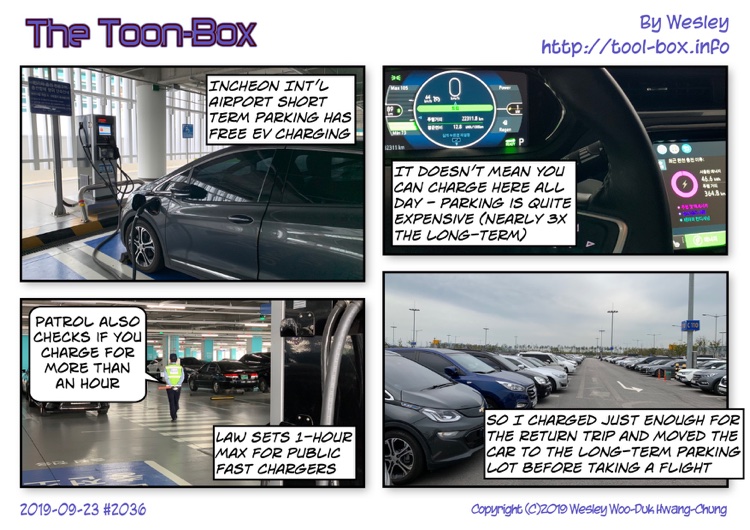
Defined tags for this entry: airport, Bolt EV, car, charger, electric, Incheon International Airport, parking lot

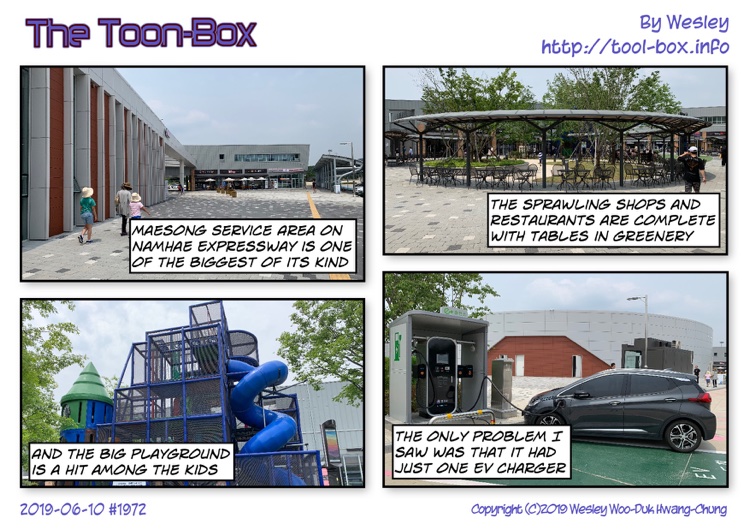
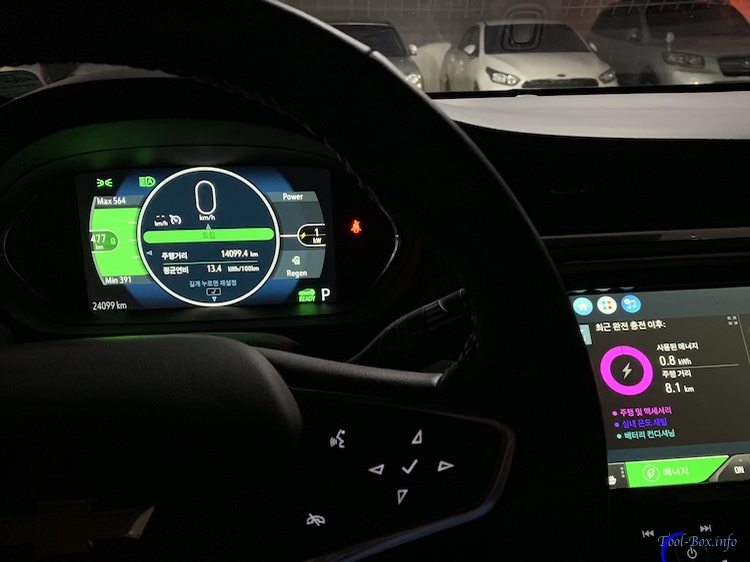
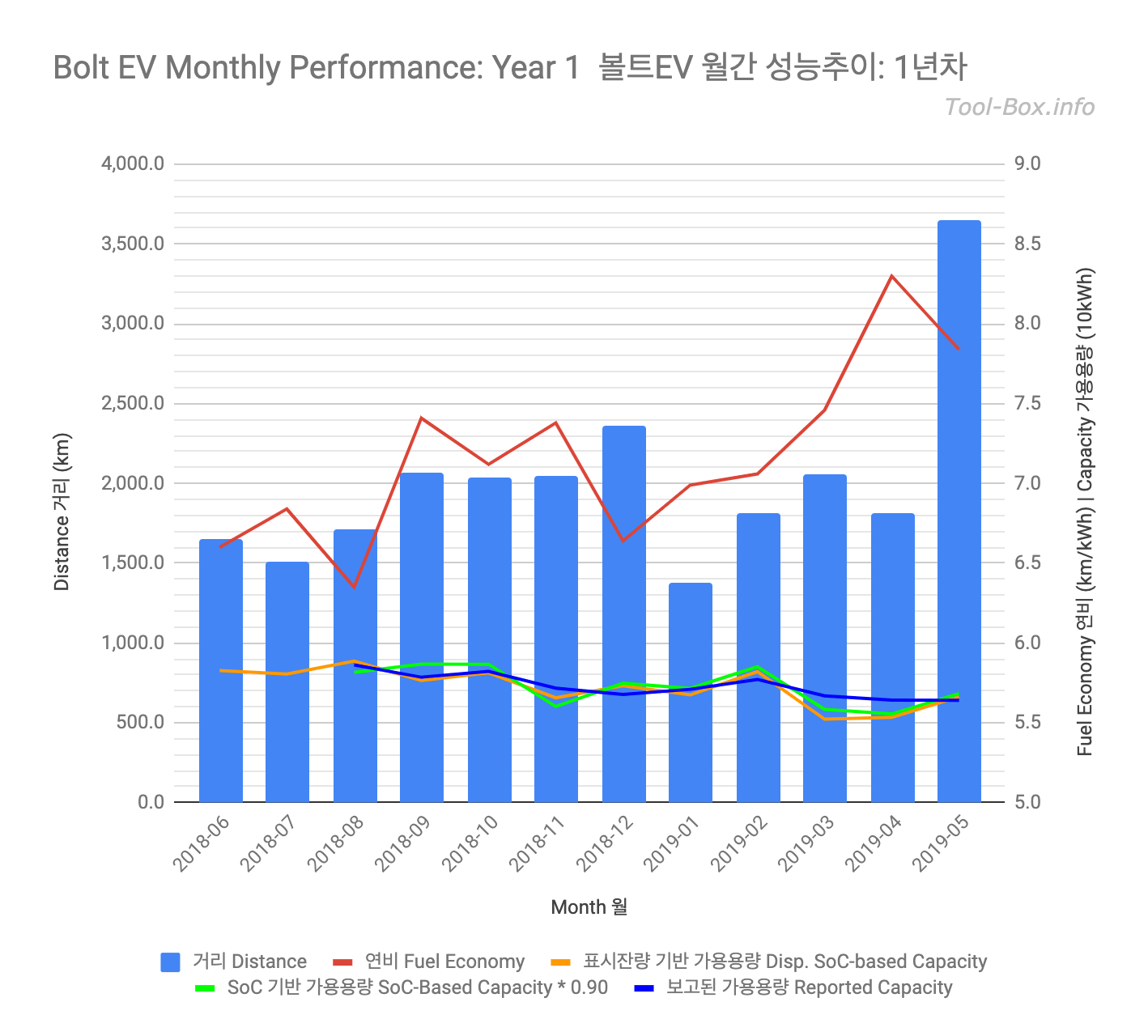
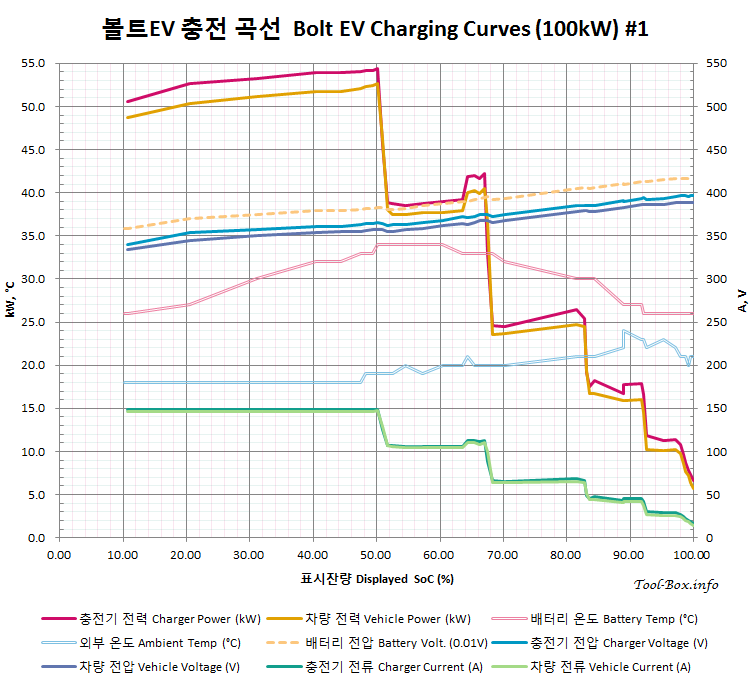

| SoC Range (%) | Duration (mm:ss) | Speed (%/min) | Power (kW) | Current (A) |
|---|---|---|---|---|
| 10 ~ 50 | 28:30 | 1.40 | 53 | 149 |
| 50 ~ 67 | 16:00 | 1.06 | 39 | 107 |
| 67 ~ 83 | 24:00 | 0.67 | 25 | 66 |
| 83 ~ 92 | 20:00 | 0.45 | 18 | 46 |
| 92 ~ 98 | 17:00 | 0.35 | 11 | 29 |
| 98 ~ 100 | 08:30 | 0.24 | 6 ~ 10 | 17 ~ 28 |